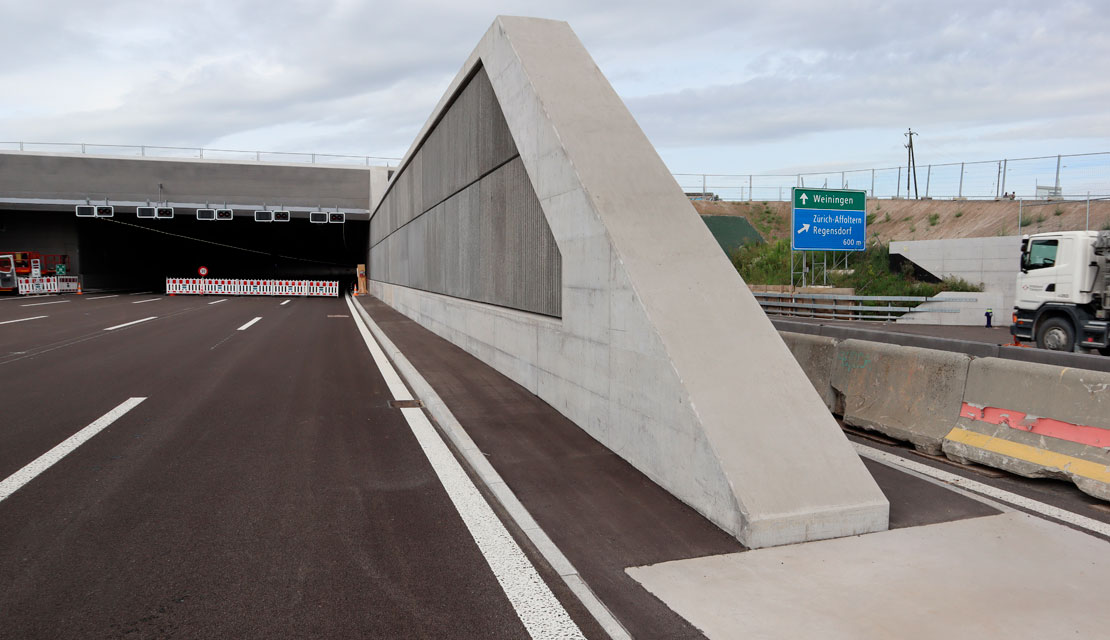Motorways in an urban environment are often caught between nature, recreation and traffic. This also applies to the northern bypass around the city of Zurich. The Katzensee recreation area, which is a nature reserve, borders the motorway and on the other side, the first settlements of the Zurich-Affoltern district begin. In order to reduce the impact on nature and people, the motorway was covered over a length of 580 metres. Amberg was responsible, as part of the IG GAWI, for the planning and construction supervision of the tunnel ventilation, the ventilation sensors and the smoke and congestion detection systems.
The Katzensee cover not only reduces road-noise, it also connects the habitat for animals and plants, which is interrupted by the motorway, with a wildlife passage.
The tunnel has a maximum of nine lanes, which is due to the high traffic volume of the motorway. Every day, around 120,000 vehicles use the tunnel, which makes it very susceptible to traffic jams. Together with the new construction of the third tube of the Gubrist Tunnel, this situation should be stopped.
Dr. Marco Bettelini, head of the "Safety and Ventilation" unit and project engineer Fadri Guetg on their way to the final test of the safety systems.
In cooperation with two other engineering companies, Amberg planned the tunnel ventilation and closely accompanied the installation. The tunnel is equipped with 26 jet fans (static thrust 740 N, engine power 35 kW). The fire detection is based on surveillance cameras and a series of smoke detectors. This enables very fast fire detection, alarming and activation of the ventilation system.
Special safety measures have been taken in view of the high probability of traffic jams and the high number of people due to the many lanes: Additional emergency exits, optimised fire detection and specifically developed ventilation scenarios in the event of a congestion in the case of an incident have been implemented.
1. The performance of the jet fans was also tested before commissioning.
2. In the tunnel, three lanes plus one additional lane lead to Bern, four lanes plus one additional lane head towards St. Gallen.
Of particular note is a new radar-based congestion detection system. The vehicles in the tunnel are detected with the aid of radar. Depending on whether there is a traffic jam located downstream of the source of the fire, active ventilation is used to prevent a backflow of smoke and to protect motorists.
Fadri Guetg, safety and ventilation project engineer, is already looking at other tasks after this successful project: "We are delighted to be able to plan the ventilation for the third tube of the Gubrist tunnel as well. A challenging and rewarding task."






